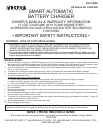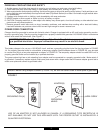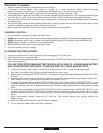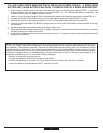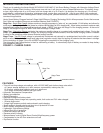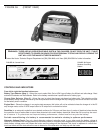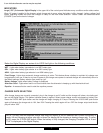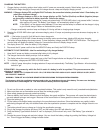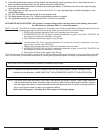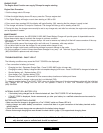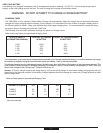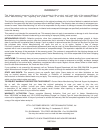
FOLLOW THESE STEPS WHEN BATTERY IS INSTALLED OUTSIDE VEHICLE. A SPARK NEAR
BATTERY MAY CAUSE BATTERY EXPLOSION. TO REDUCE RISK OF A SPARK NEAR BATTERY:
1. Check polarity of battery posts for top-mounted battery connectors, the Positive posts (marked POS,P, +) usually has
a larger diameter than the Negative battery post (marked NEG, N,-). For side-mounted battery connections, the
Positive terminal is red, the Negative terminal is black.
2. Attach a 24-inch (minimum length) 6 AWG insulated battery cable to the Negative battery post (marked NEG, N,-).
3. Connect the Positive (RED) battery clamp to the Positive battery connector (marked POS,P, + or red).
4. Stand as far back from the battery as possible, and do not face battery when making final connection.
5. Carefully connect the NEGATIVE (BLACK) charger clamp to the free end of the battery cable connected to the neg-
ative terminal.
6. Set the charge rate to appropriate setting according to battery size.
7. When disconnecting charger, always do so in reverse sequence of connecting procedure and break first connection
while as far away from battery as practical.
8. A marine (boat) battery must be removed and charged on shore. To charge it on board requires equipment specially
designed for marine use.
NOTE: T
his equipment has been tested and found to comply with the limits for a Class B digital device, pursuant to Part
15 of the FCC Rules. These limits are designed to provide reasonable protection against harmful
interference in a residen-
tial installation. This equipment generates, uses and can radiate radio frequency energy and, if not installed and used in
accordance with the instructions, may cause harmful interference to radio communications. However, there is no guar-
antee that interference will not occur in a particular installation. If this equipment does cause harmful interference to radio
or television reception, which can be determined by turning the equipment off and on, the user is encouraged to try to
correct the interference by one or more of the following measures:
- Reorient or relocate the receiving antenna
- Increase the separation between the equipment and receiver
- Connect the equipment to an outlet on a circuit different from that to which the receiver is connected
- Consult the dealer or an experienced radio/TV technician for help
4



